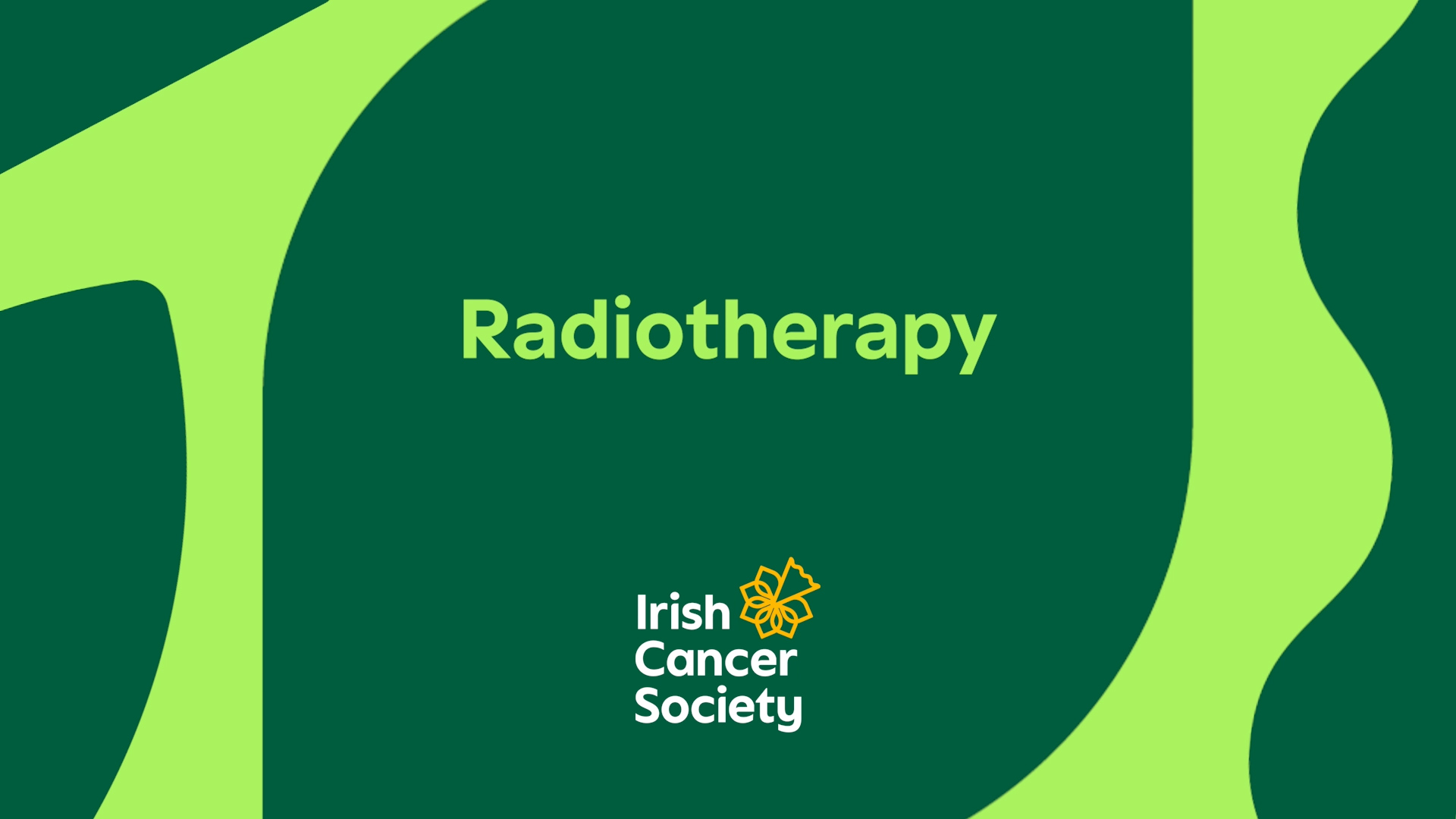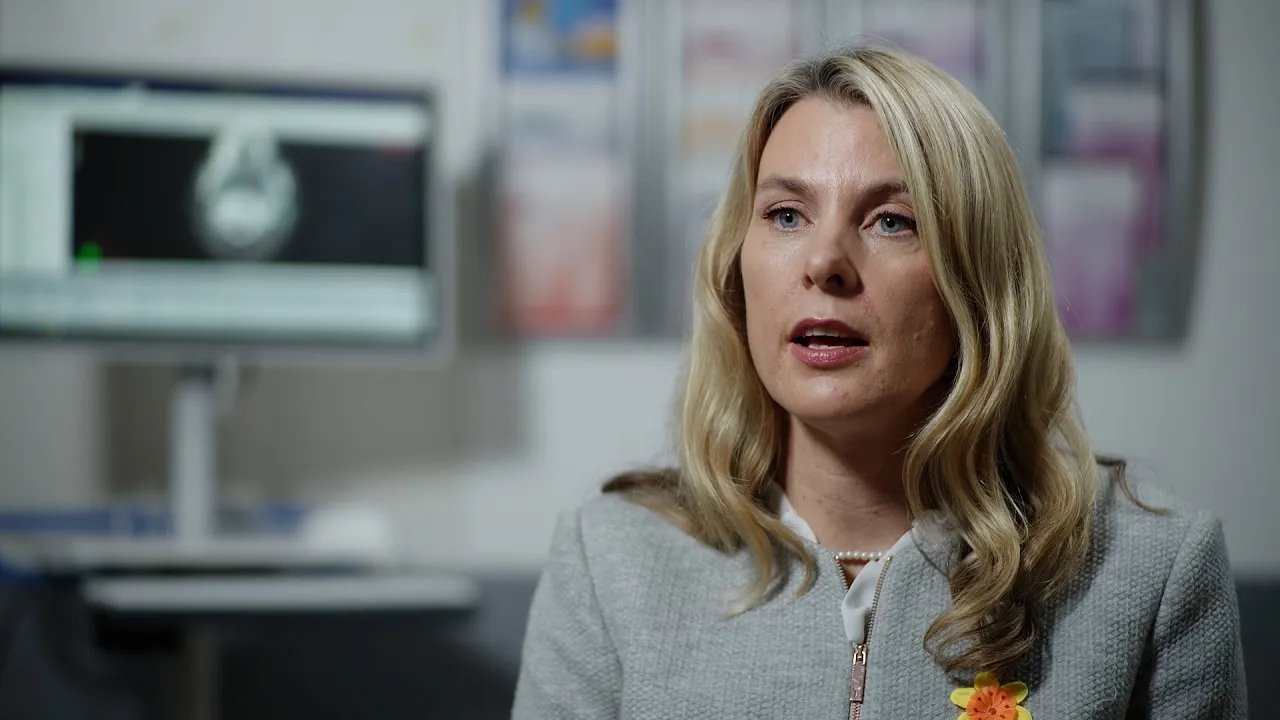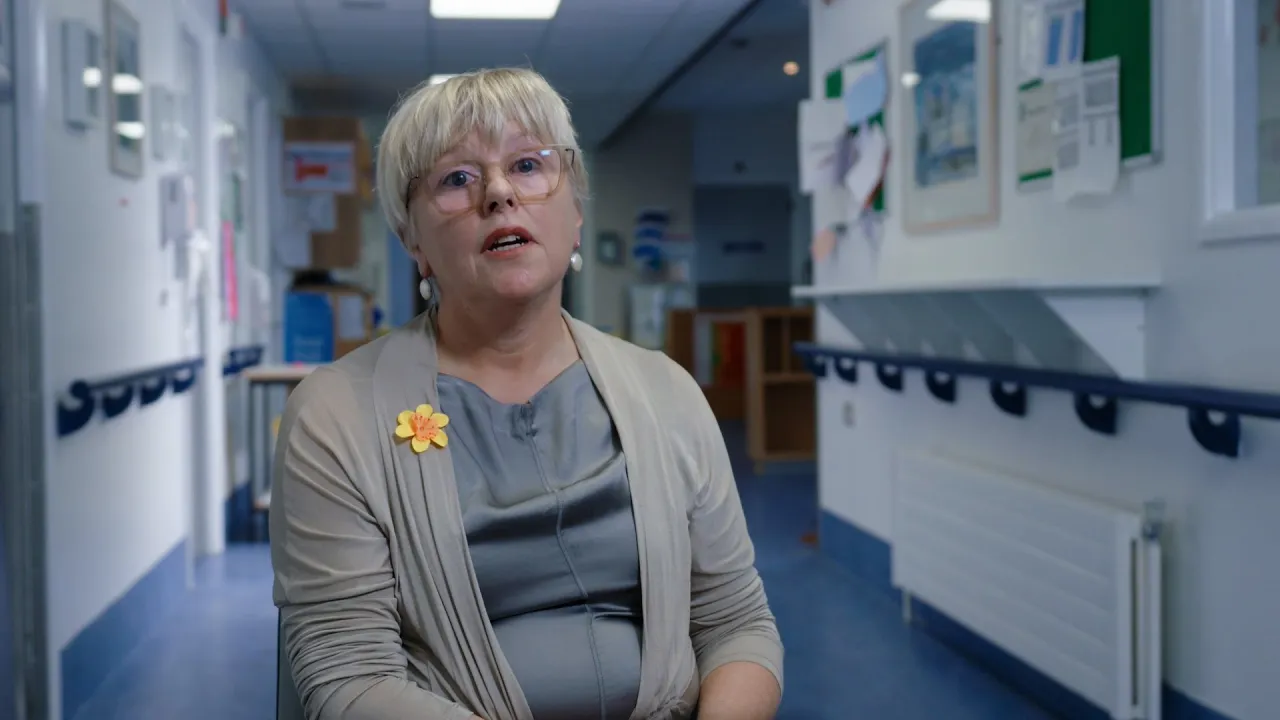Radiotherapy 4: Pre-treatment planning
This video explains what happens, and what you need to do at your planning appointment before treatment begins.
0:04
A typical patient pathway may vary slightly from hospital to hospital. What you can expect during your radiotherapy treatment will differ depending on what part of your body is affected.
0:16
You will have at least one pre-treatment planning appointment at the hospital before you start your treatment. As radiation beams can damage normal cells, as well as cancer cells, the planning appointment is to ensure your treatment is as precise as possible and to avoid damage to healthy cells.
0:35
You will meet the team, who will do a physical examination to check your general health and discuss your treatment in more detail. You may also need to have other relevant X-rays and blood tests.
0:48
The doctor and team will outline a treatment plan for you and go into more specific details about treatment type, such as which type of radiotherapy is best for you and your cancer and the possible side-effects.
1:07
As previously mentioned, you will have a CT and/or MRI scan before starting your radiotherapy treatment. You will not receive any results from the scan. It is used to create a specific treatment plan for each patient.
1:20
The scan outlines and/or maps the exact area to be targeted by the radiotherapy, also referred to as the treatment field and decides the position you will be in when you get your radiotherapy treatment. These scans are used specifically to make sure the radiotherapy treatment is focused exactly on the correct tumour site.
1:40
It is useful to consider and know the following when you go for your planning scan: You should wear comfortable clothes that are easy to take off and may be asked to change into hospital gowns on arrival. Make sure you eat and drink as normal before attending your CT scan. The team will let you know if you need to be fasting before your scan. You do not need to bring anything with you for the CT scan, just yourself.
2:05
Most appointments are about 30 minutes, unless you have been asked to take a preparation for your bladder and/or your rectum, which will take a little bit longer. The CT scanner is shaped like a doughnut that you passthrough the other end. You won't feel anything, but the scanner makes noises like a washing machine on spin, not loud clanging noises like an MRI scanner.
2:29
Be sure to follow any preparation instructions provided by your doctor or nurse specialist. Depending on what part of the body is receiving radiotherapy, you may be asked to ensure you have a full bladder. This ensures the small bowel is pushed up out of the way of the treatment beam and will reduce short and long-term side-effects.
2:51
If your left breast is being treated, you may need to hold your breath for the duration of the scan. This is usually around 20 seconds. This is known as deep inspiration breath hold or DIBH. Holding a deep breath expands your lungs and pulls the heart away from the chest wall in order to keep your heart out of the way during the scan. And again, for finding the treatment field.
3:14
Immobilisation devices will be used to ensure you stay still for your treatment. You will be measured and planned for these devices at this appointment too. You will be positioned so that certain areas are not obstructing the treatment field. For example, you may have your arms above your head or a knee rest under your knees.
3:34
If you are having your brain or head and neck area treated, we will make a mask for you. The mask is made of hard plastic, which becomes soft and pliable after being soaked in a hot water bath for about 3 minutes. And this makes it easy to mould over your face and/or your shoulders. In some instances, these masks may be faceless.
3:56
Once you're in position, we will draw some pen marks onto the skin or mask, using a marker, and add some stickers to the skin or mask to make sure you're in the right position for the scan, and to mark where the radiation beams will be aimed when you are having your treatment.
4:12
Once this is done, we will leave the room to start the CT scan. We will only be gone for a few minutes and we will be monitoring you closely at all times. The pen marks will wash off the skin following the scan.
4:25
At the end of the CT scan, we will mark the treatment area with three small permanent tattoo dots, depending on where we are treating. These are given by placing some ink on the skin and then pricking the skin with a needle. The dots are no bigger than a freckle but they are permanent. These tattoo dots will be used every day for treatment to get you in the right position on the treatment bed. Some treatment centres don't use any tattoos at all. This will be explained to you at the start of your treatment.
4:57
Your treatment will start 2 to 3 weeks following the scan, as the radiation oncologist and the physics team need some time to create a unique treatment plan for you.
5:10
Here are some of the team members that you may meet as you progress through your treatment journey. A consultant radiotherapist. This is a doctor who specialises in treating cancer with radiation therapy.
5:25
Specialist registrars are doctors who specialise in treating cancer patients with radiation therapy. They work with your consultant radiotherapist as part of a team to deliver and review your care.
5:39
A diagnostic radiographer takes pictures of your body using specialist imaging equipment. A radiation therapist, who delivers your radiotherapy treatment and checks on how you are managing daily.
5:56
The radiotherapy nursing team. This is a team of specialist nurses who will assess your needs and any symptoms related to your treatment. All cancer services have dedicated acute oncology service nurses who are available on the phone, if you have any concerns or questions.
6:17
A dietitian, who specialises in supporting patients with nutrition and dietary needs. A speech and language therapist. These specialise in supporting patients with speech, eating, drinking and swallowing.
6:35
A physiotherapist, who specialises in supporting patients with mobility, physical and rehabilitation needs.
6:45
Medical social workers, who will explain your financial entitlements and help you adjust to the changes and challenges at this time. A psychologist or psycho-oncologist, who will give you the psychological and emotional support at this challenging time.
7:04
Hospital administration staff, who will help with booking treatment appointments, transport and clinic appointments. And they will usually be the first people you will see when you arrive for your appointments.







